The long-awaited, oft-rescheduled trip to England was a heady mix of emotions: apprehension as to how difficult it might be to navigate changing requirements, elation at the freedom of travelling again, disappointment and frustration with the National Trust, amusement at the righteous indignation with which faux-adherence to “requirements” was offered as an excuse for bad service, sadness in learning how many of our favourite restaurants had closed and joy in discovering new ones.
The trip started and ended in London. Although we usually visit London at one end of the journey, not both, returning a rental car to a different location from which it was obtained increased the price more than six-fold: from $700 to $4500. Rental car companies with scarce commodities are in the happy position (for them) of dictating terms. Right, then. Bookending London it was.
We often stay in the St. James’s area, either at the Stafford or the St. James’s Hotel and Club. The St. James’s had been holding our pre-paid reservation since the fall of 2019 for the first of several trips planned and subsequently cancelled, So, that was the choice this time. I’ll simply say that they have not weathered the storm particularly well. I appreciate that staff is hard to come by at present, but that does not explain leaving the vacuum cleaner and an open container of dirty linens in the upstairs hallway for the duration of our stay. The restaurant was open, but the hotel offered neither room service nor in-room preparation of coffee. Call me spoiled, but I am not fond of foraging for coffee first thing in the morning. Hmmm. Was this a harbinger of what to expect? We hoped not.
Happily, London was bustling. No Time to Die had just premiered, and London was abuzz with it — buses sported images of 007 in various postures.
The Burlington Arcade invited you to step through the tunnel.
Upmarket eveningwear designer Jenny Packham has produced a remarkable 007 series of dresses. Back in the ’70s, when A Spy Who Loved Me first came out, I pined for the deep blue evening sheath worn so sweepingly by Barbara Bach. Well, it’s just as gorgeous in its latest incarnation. For a nanosecond, I toyed with the idea of trying it on at Harrods, but a quick examination of the dress displayed on the manikin confirmed my suspicion that the bodice was devoid of structure. If the thought of exposing all that skin wasn’t enough to make me blench, that clinched the matter—while I may have been able to pull it off in my salad days, the dress was entirely unsuitable for someone of my weathered vintage. But it was beautiful, nonetheless.
Glenn and Lauren headed off to the Imperial War Museum, and I arranged to meet up with them afterwards at the Borough Market. Speeding over the Westminster Bridge in a black cab, I rejoiced in the sunny weather. I observed that Big Ben remains shrouded in scaffolding, but the clock itself is still visible.
Arriving at the Borough Market, I discovered that Lauren and Glenn had already been eyeing the mushroom risotto.
We decided to have some freshly shucked oysters with a glass of prosecco before sharing a helping of delicious paella. It was just as good as we remembered.
We had rented a house for our next stop and cast an eager eye for any goodies we might like to take with us. The charcuterie was very tempting.
Spice Mountain sold any spice the heart desired, especially curries.
Oooh – pork roast with crackling! We didn’t have refrigeration, however, so we gave the meat a miss. But we vowed to find a “Sunday Roast” in a pub somewhere and enjoy it ready cooked.
We did purchase some ginger cake, and I’m happy to report it was scrumptious – dense, sticky, delightfully gingery—it hit the spot.
Fresh produce galore at Ted’s Veg.
Being England, there were dogs everywhere, a welcome sight, as we were already missing our guys.
We decided to pick up some vacuum-packed sliced salami, which would keep, to enjoy at our upcoming self-catering house.
Back to the hotel, we got ready for dinner at an old favourite, Berner’s Tavern, which is misleadingly named. I’ve tried (unsuccessfully) to get a good shot of the stunning decor every time we’ve visited, but the subdued lighting has defeated the phone camera, and hauling a full-size DSLR into a dining establishment is intrusive. But I recently upgraded my Christopher-Columbus issue phone, and we were in luck—both early and seated at the corner table, affording an excellent view. The deeply coffered, heavily embossed ceiling and crown mouldings are over the top (literally). The rest of the decor is simple and elegant.
We always enjoy the braised dish, which is often lamb, sometimes beef. This time, both were on offer. The shared portion is more than enough for three, so we each chose individual appetizers, shared a bottle of wine and enjoyed the evening.
The next day we were too late for breakfast at The Wolseley, so we snagged croissants and lattes and started walking.
London is blessed with remarkable green space, including the Royal Parks, lands originally owned by the monarchy of the UK for the recreation (primarily hunting) of the royal family. As London became urbanized, a good portion of this space became public parks. Today, eight green spaces are formally designated as Royal Parks, covering around 5,500 acres (2,226 hectares) of land in Greater London.
Bushy, Greenwich and Richmond Parks are in the suburbs; the rest are in central London. We had visited St. James’s Park, Green Park, Hyde Park and Kensington Gardens many times, but not yet visited The Regent’s Park, so we made it a priority on this visit. While it’s a goodly size, it’s walkable from one end to another with ease, unlike Hyde Park, which is a bit of a trek.
The entrances to the Royal Parks are suitably grand, with wrought iron gates.
Beautiful walkways, lush with formal plantings, give way to large open spaces, playing fields, natural areas and wildlife habitats.
In Hyde Park, equestrians still ride horses on Rotten Row, part of King William III’s former carriage drive from Whitehall to Kensington Palace, completed in 1690.
The rose pergola was still covered in roses, though few bloomed at this late season.
The squirrels are so tame they eat out of tourists’ hands to the children’s delight and the parents’ apprehension. We saw a couple of more adventurous squirrels scaling someone’s pant leg in their eagerness to explore possible food options.
Have you ever seen a fatter squirrel? He seemed to be eyeing us up for food possibilities but decided against waddling over.
We were taken by surprise by a flock of parakeets in Hyde Park. They’ve adapted quite nicely to English weather, and like the squirrels, find a ready source of food among indulgent humans.
My pedometer revealed we had covered twelve miles, and my aged feet were aching. Back to the hotel for a shower and off to dinner.
Cicchetti, on Piccadilly, was packed to capacity; the food is fabulous. “Originating from Venice, the Cicchetti experience celebrates one of the most enjoyable aspects of Venetian life – eating. Diners are encouraged to create their own meal from the cicchetti menu by ordering multiple plates to share, or eat alone. Dishes are cooked at the point of order using only the finest Italian produce, and menus are changed regularly to embrace and celebrate the seasons.”
When we dined at Chiccetti in 2017, then four-year-old Juliana and six-year-old Maddie were delighted to receive a complimentary ice cream dessert of gigantic proportions. Despite having hoovered back appetizers, pasta and salad, they had no difficulty dispatching it. Lauren discreetly snapped a picture of a sundae being demolished at the next table to send to the kids as a reminder. We were amused to see the envious expression on the face of the gentleman in the background. Clearly, the appeal of the said sundae is not confined to children.
Our credit with the St. James’s exhausted, Glenn and the large suitcases set off in the rental car— Glenn to attend the Goodwood Member’s Meeting, the bags to languish in his hotel room. Lauren and I checked into the newly opened Mayfair Townhouse, the latest in the line of the Iconic Luxury Hotels.
As described on their website:
The Mayfair Townhouse lines the illustrious Half Moon Street, once the setting for Oscar Wilde’s most famous play, The Importance of Being Earnest. Built from 1730, Half Moon Street was a colourful haunt for bachelors, bohemians and artistic types in Victorian London. During this time, many of the street’s townhouses were split into residential apartments for the elite to live in before marriage. Iconic fictional characters such as Oscar Wilde’s Algernon Moncreiff and Bertie Wooster’s in P. G. Wodehouse’s famous comedies resided here. These characters live on in the Townhouse Today. Meet them for a drink at The Dandy Bar…see them on the walls as you walk to your private suite. Our building? Steeped in history dating back to the 1700s when the Renard Family – wealthy Huguenot refugees from France – used funds from their family bank to construct rows of townhouses for the newly wealthy merchant class.
The Mayfair district was developed in the late 1600s to host the annual May Fair, whose attendees were of humble origins. The area was very rural at the time. Indeed, Milkmaid’s Passage, a shortcut from Green Park to the Stable Yard at St. James’s Palace, allowed access to the cows pastured in nearby Green Park. The prominent Grosvenor Family (who still owns swathes of London) gentrified the area when Grosvenor Square and Hanover Square were built. Several of Georgette Heyer’s heroines of the Regency Period aspired to be married in the fashionable church, “St. George’s, Hanover Square”.
We loved the Mayfair Townhouse; it’s quirky without being self-conscious. The renovation joined together fourteen contiguous townhouses, so the hallways zig and zag a bit. The interior has been thoroughly modernized. You’ll find state-of-the-art lighting systems, heated floors in the bathrooms and best of all, a small fridge drawer to hold drinks, including a tiny bottle of milk for tea and coffee.
More drawers hold snacks, coffee pods and a selection of teas.
We had two days left happily to our own devices. Lauren had done a bit of research on places we might look for in our wanderings. One destination was Little Compton Street, located below ground near #2 Compton Road, at the intersection of Charing Cross. The instructions on Atlas Obscura were for us to search for an iron grille and catch a “beguiling glimpse into a long lost road buried underneath the modern day streets of London.” What fun! A buried street. It happened to be on our way to The Pie Room, the restaurant that inspired the book of the same name by its chef, Calum Franklin, So off we went!
Popular belief holds that Little Compton Street was buried by the Metropolitan Board of Works in 1886 when Charing Cross Road was extended to connect Trafalgar Square, Oxford Street and Tottenham Court Road. The construction ploughed right through one of Victorian London’s most notorious slum districts, and urban legend proposes that the street level was much lower back then, running at the basement height of today’s buildings. Hmmm – seems like a lot of build-up in a relatively short period, wouldn’t you say?
But let’s not quibble—let’s find that grille and have a look. It turns out that this grille is literally in the middle of Charing Cross Road, on a small island surrounded by speeding traffic. To catch a glimpse of the buried road sign, one must be exceedingly mindful of passing buses and taxis. Crouching down, I pushed the camera right up against the grill and fiddled with the focus until I could get a clear shot of the street sign through the bars. Fascinating.
Sadly, the true story is more prosaic than the legend. The “buried street” is actually a purpose-built subway network to house the utilities for the emerging modern age of London. Doesn’t that make sense? Containing the utilities in a network of accessible subways minimized disruption due to repairs or additions. While Little Compton Street had indeed been obliterated to make way for the extension of Charing Cross Road, the portion of the subway tunnel underneath where it had been was named in its honour.
Mission accomplished, we were off to The Pie Room for Lunch. It didn’t disappoint. Part of the Rosewood Hotel, The Pie Room at Holborn Dining Room is dedicated to one of Britain’s most iconic dishes. Spearheaded by Executive Head Chef and pastry expert, Calum Franklin, The Pie Room is a treasure trove of savoury delicacies all handmade by Chef Calum and his team and served on the menu in Holborn Dining Room.
A glimpse through the door to The Pie Room. One of the chefs is hard at work fitting pastry into small ceramic containers.
The Holborn Dining Room is surprisingly large.
With homey touches such as the linen lamp shades.
I had the Mushroom, Tarragon and Chicken Pie; Lauren had the Pork Pie; I got the tastier dish. Hers would have been better served cold as part of a Ploughman’s Lunch or picnic. Oh well, next time.
We had dinner reservations at NoMad that night and were trying (unsuccessfully) to spare our appetites. I’d read about NoMad online and was intrigued to learn it was located inside what had previously been The Bow Street Magistrates’ Court and Police Station. As in, home of the famous Bow Street Runners for any murder mystery fans. The restaurant is located in the atrium, surrounded by what would have been the cells, now hotel rooms. The food was spectacular, and fortunately, given our previous consumption, the portions were moderately sized. The service was superb, both friendly and attentive. We would go back.

Photo Courtesy of the NoMad Hotel website
After a delicious breakfast in the Mayfair Townhouse the next day, we set off again on foot. The weather was iffier but perfect for wandering, equipped with raincoats and an umbrella. First stop: St Martin in the Fields, which I have passed a million times, but never gone in. Here are a few quick snaps – I’ll do a complete write up later, but briefly, it was designed by James Gibbs and completed in 1726. Previous versions of it were indeed “in the fields”, Today, it is flanked by the National Portrait Gallery and Trafalgar Square. It is stunningly simple and elegant.
Below is the famous crypt, where divine looking lunches were being served. We had just had breakfast but were sorely tempted to try out the pies. We restrained ourselves, however.
The gift shop provided us with some lovely “pop and slot” cardboard advent calendars for the little ones. Flat and light, they made perfect gifts, being easy to transport. This is the “Silver Stag”. The shop had a good selection, so we managed to get different ones for each granddaughter. They’re small enough that the girls can keep them in their rooms. Lauren and I reasoned that these could be in addition to the wooden advent calenders I fill each year with chocolate and Lego or Playmobil for each family to share.
We browsed, window shopped and generally had a good day. Over at Sloane Square, we noticed this passageway fully decked out for fall.
The next day, Lauren and I boarded the train for Chichester to meet up with Glenn and embark on the next leg of our journey. Here is Part II, Stay tuned for Part III.

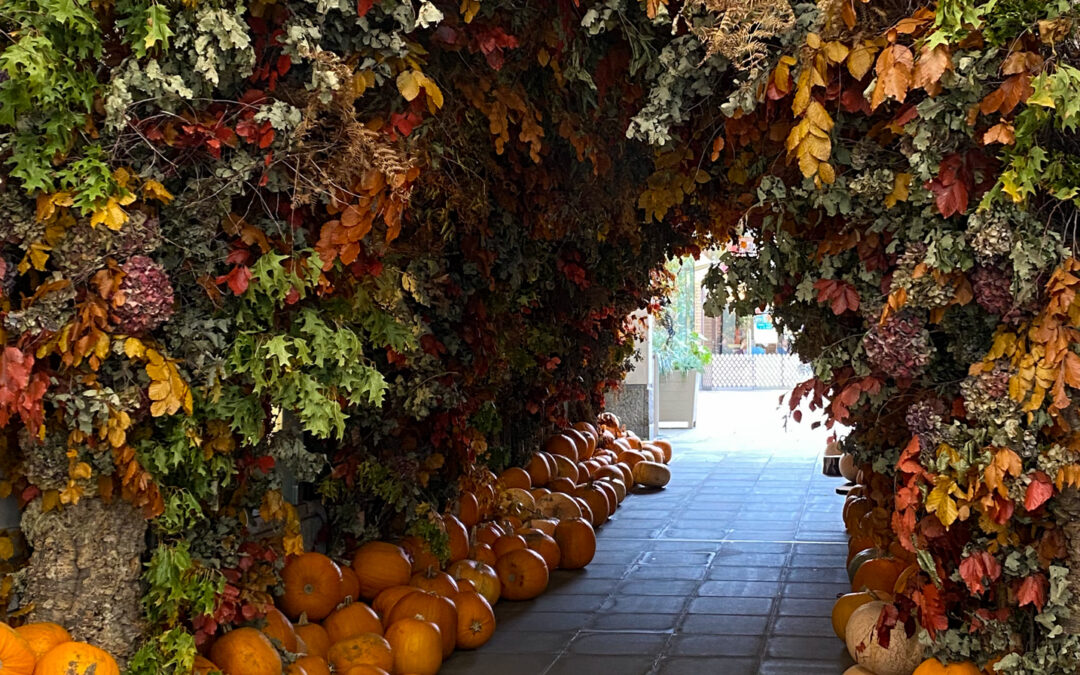
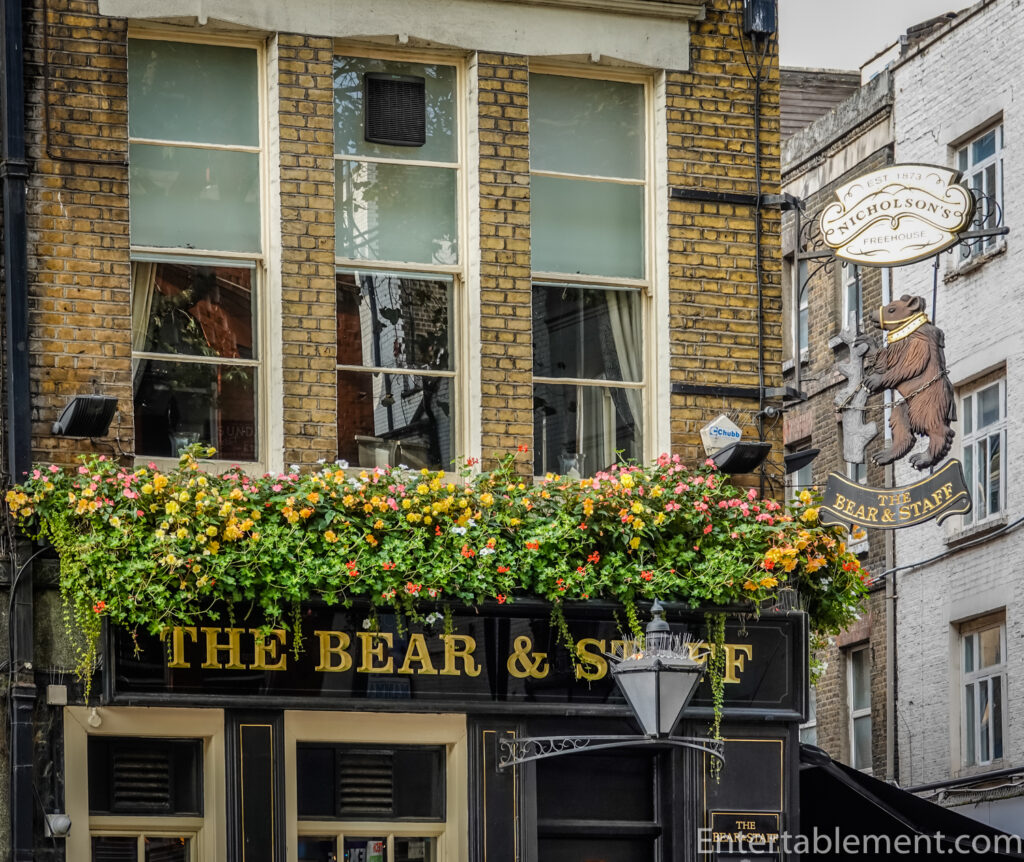
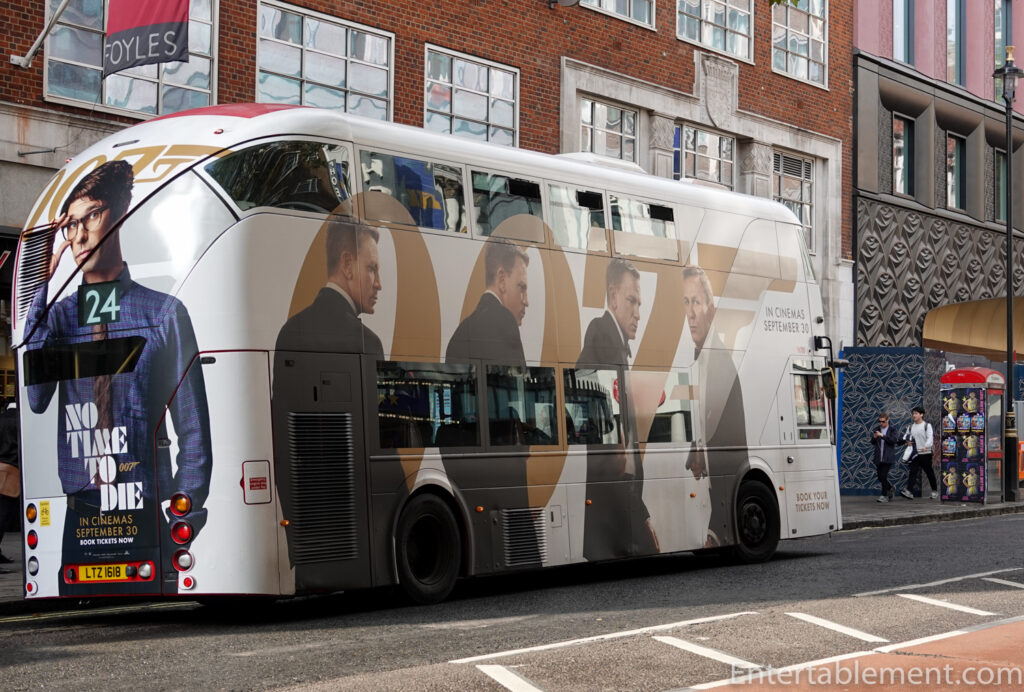
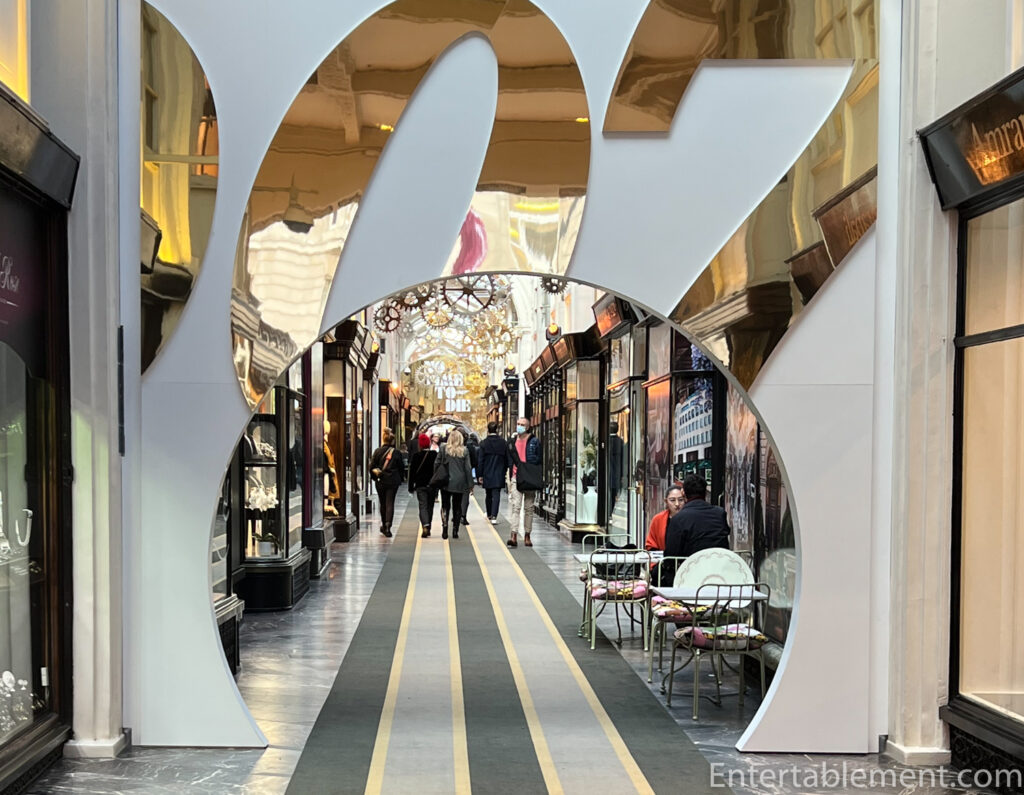
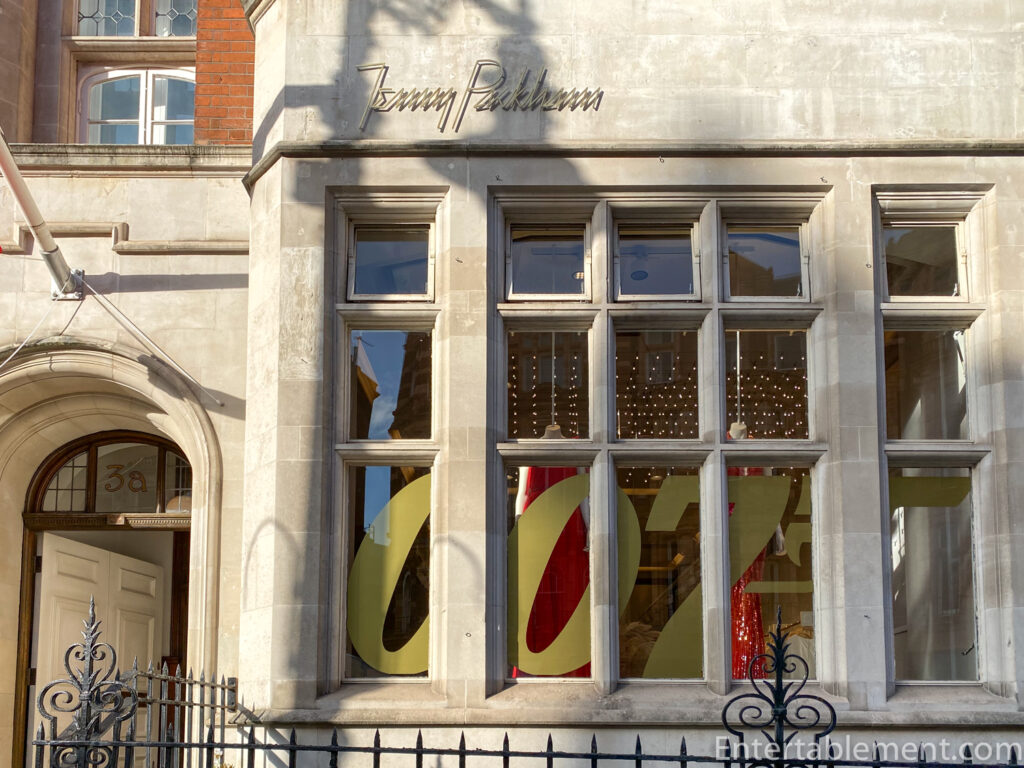



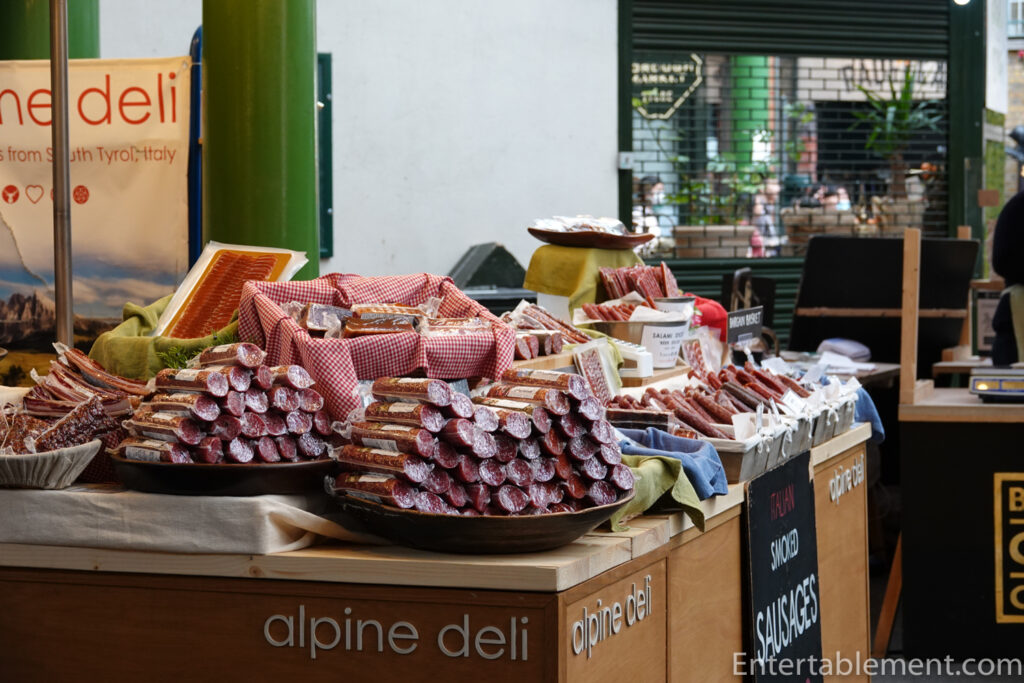



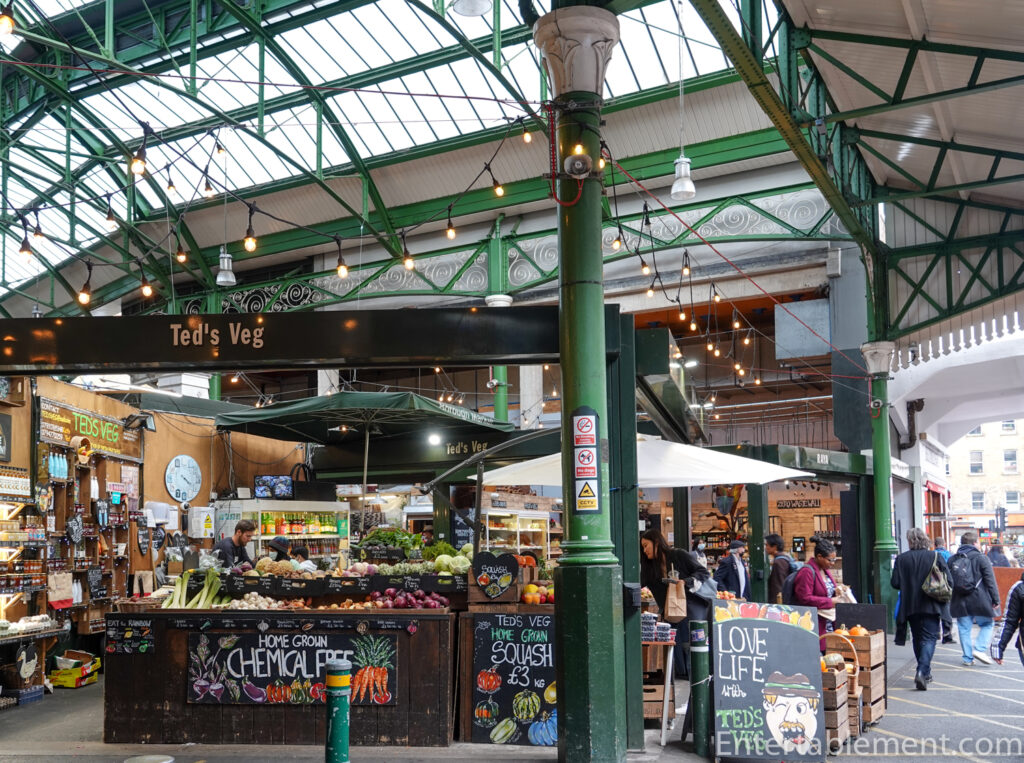
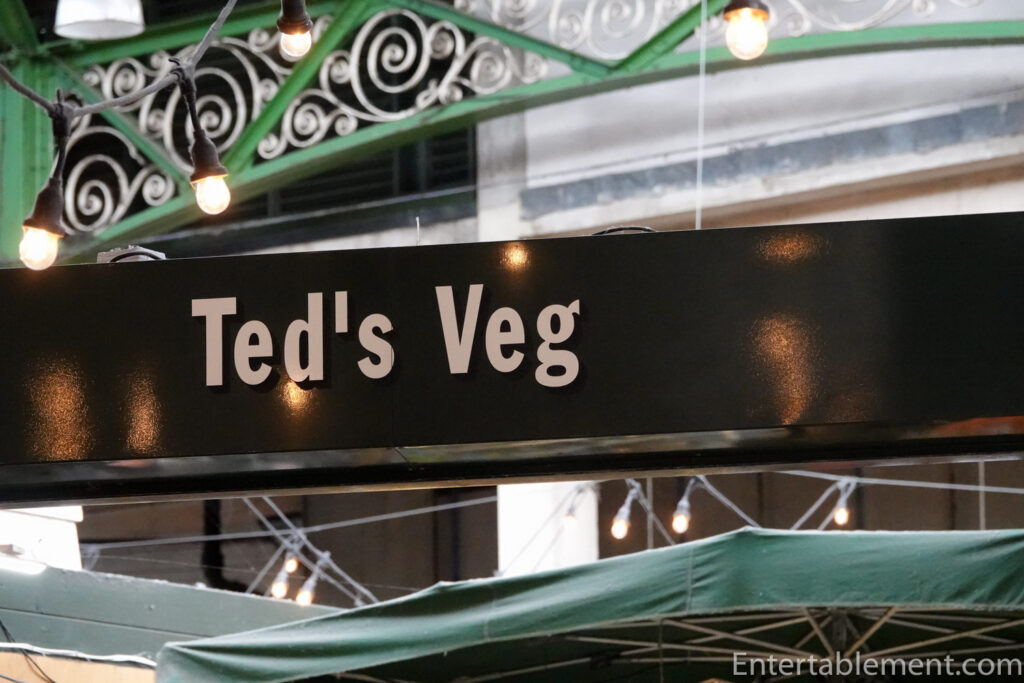


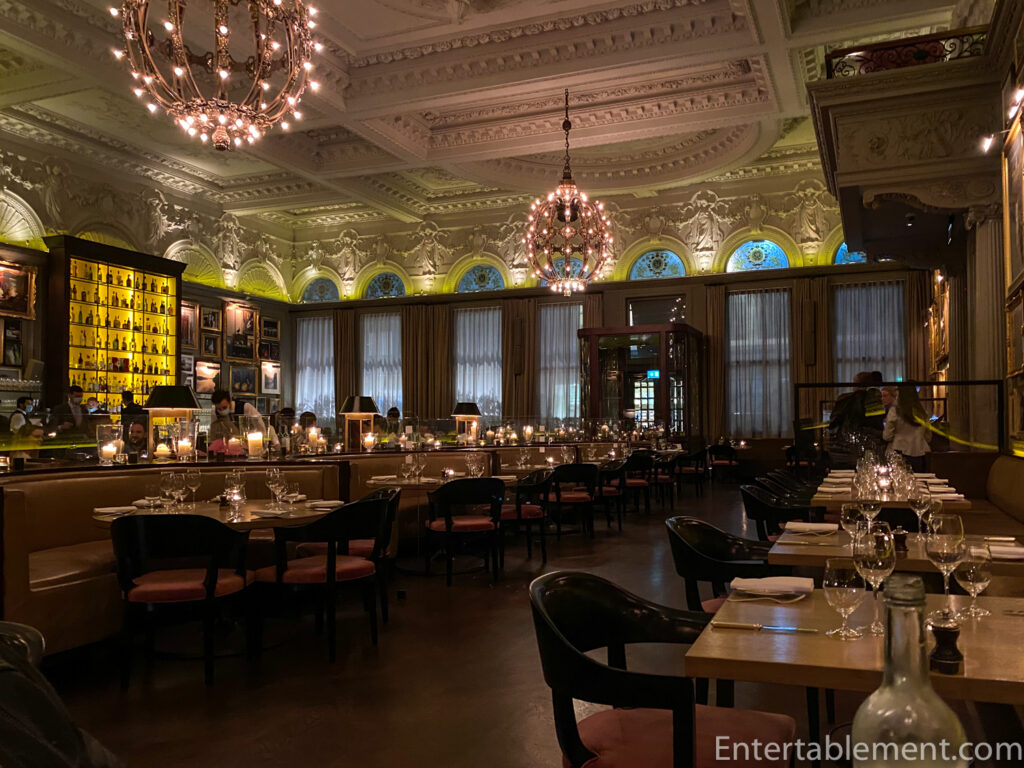

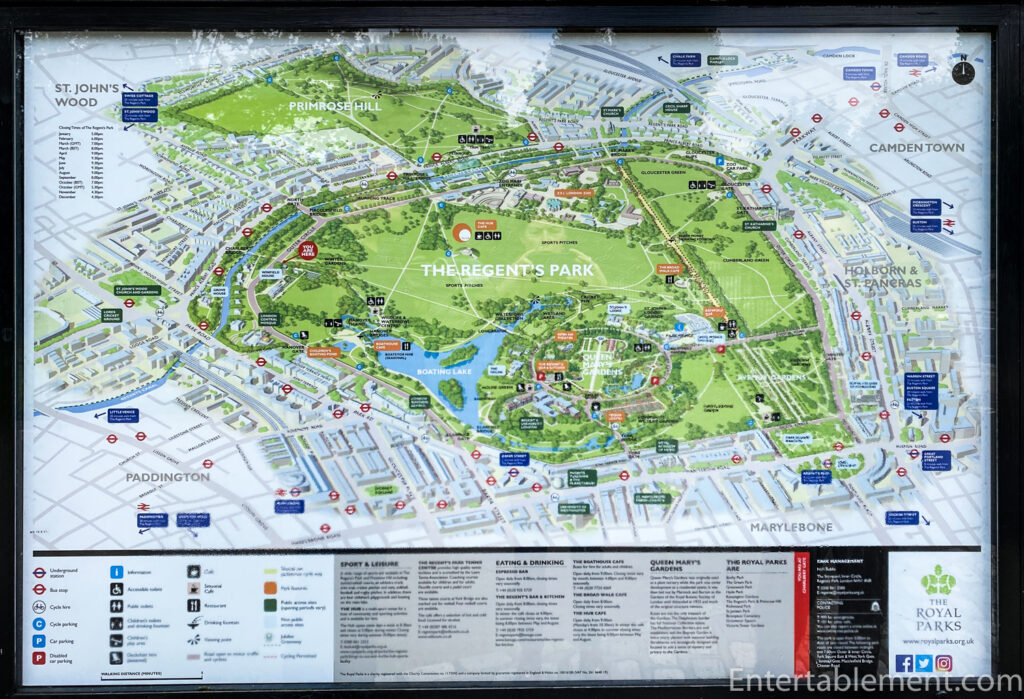
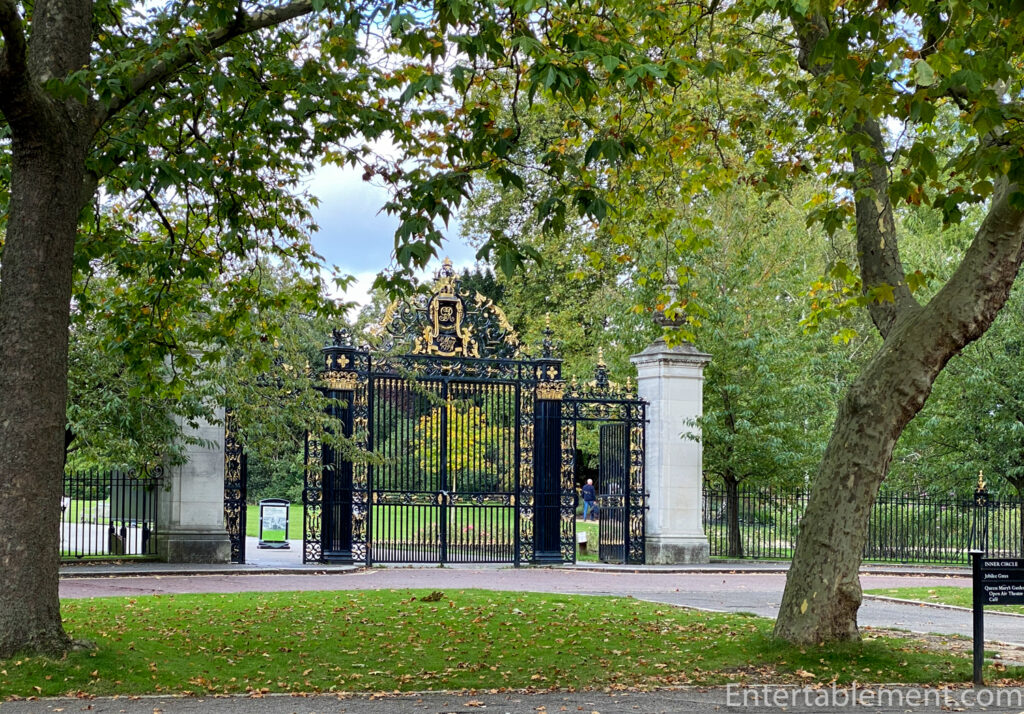

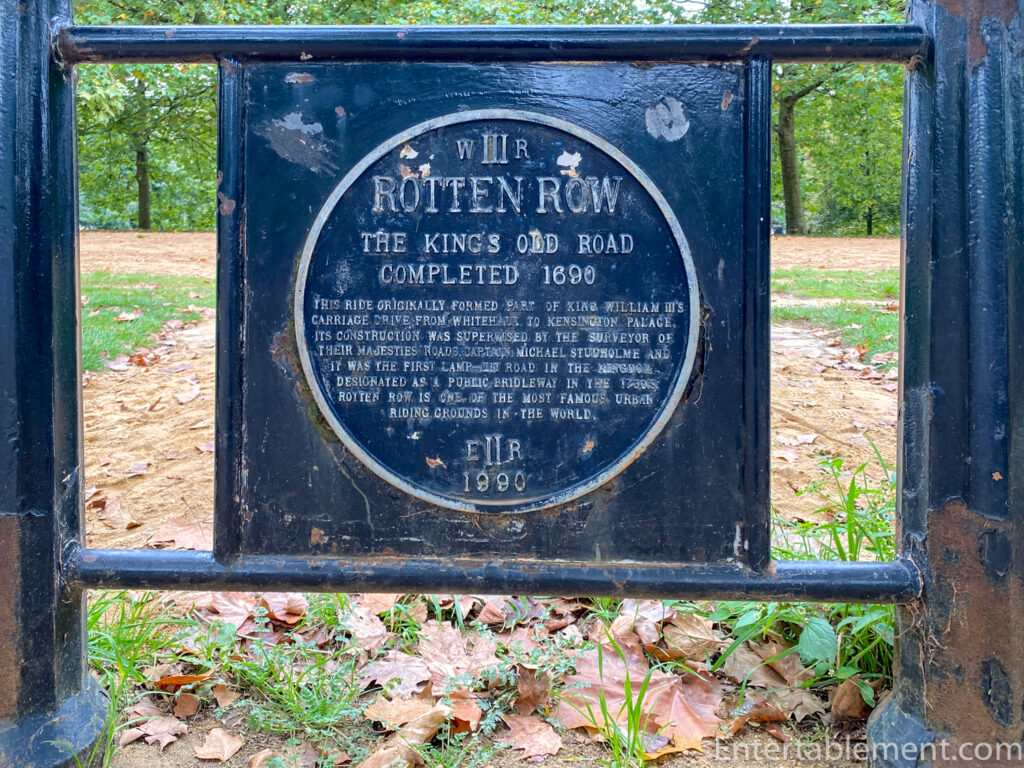





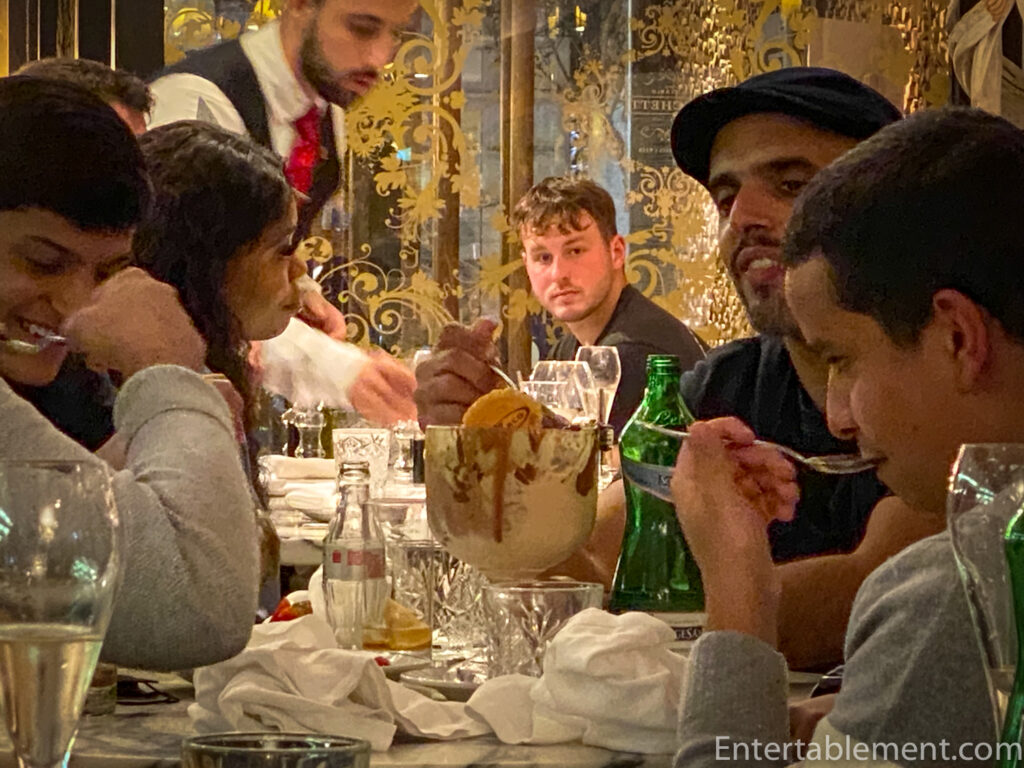

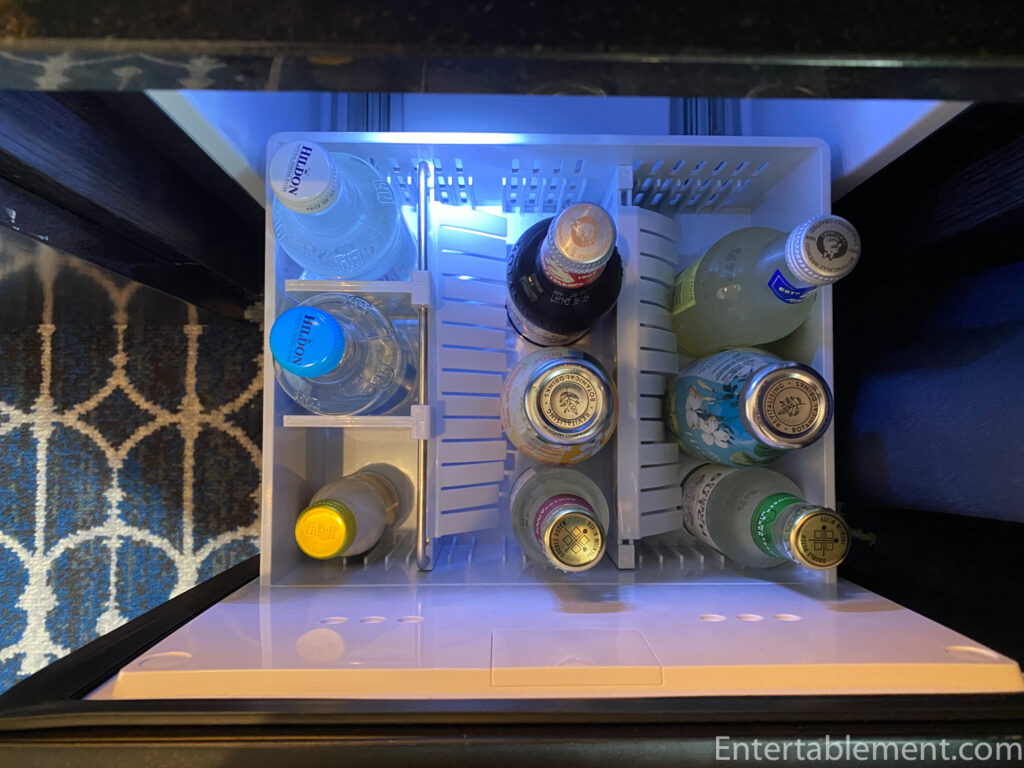

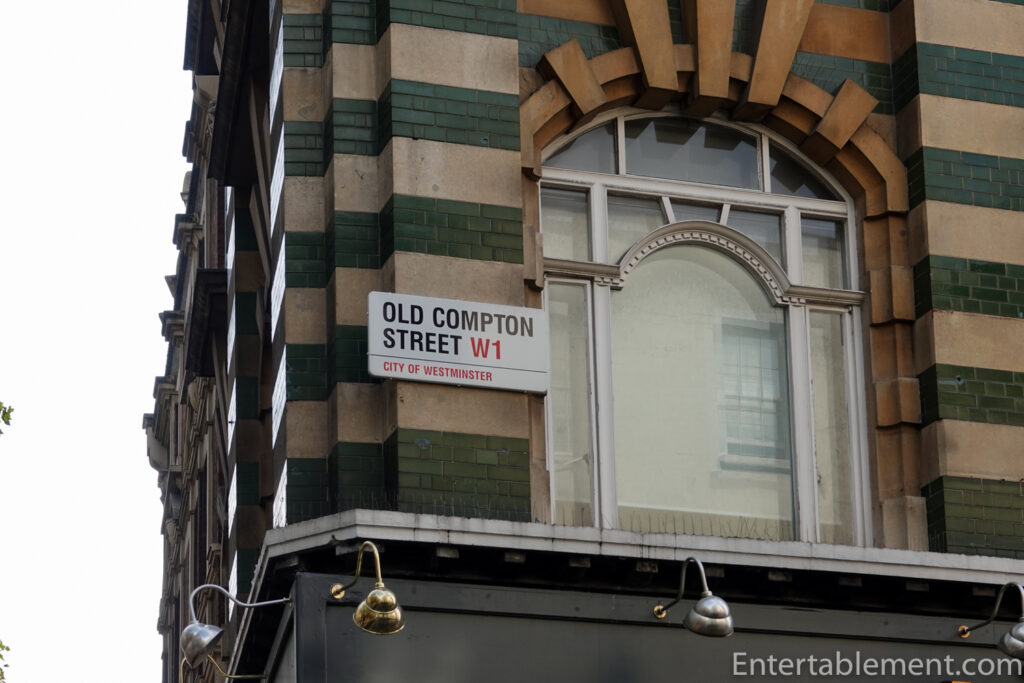
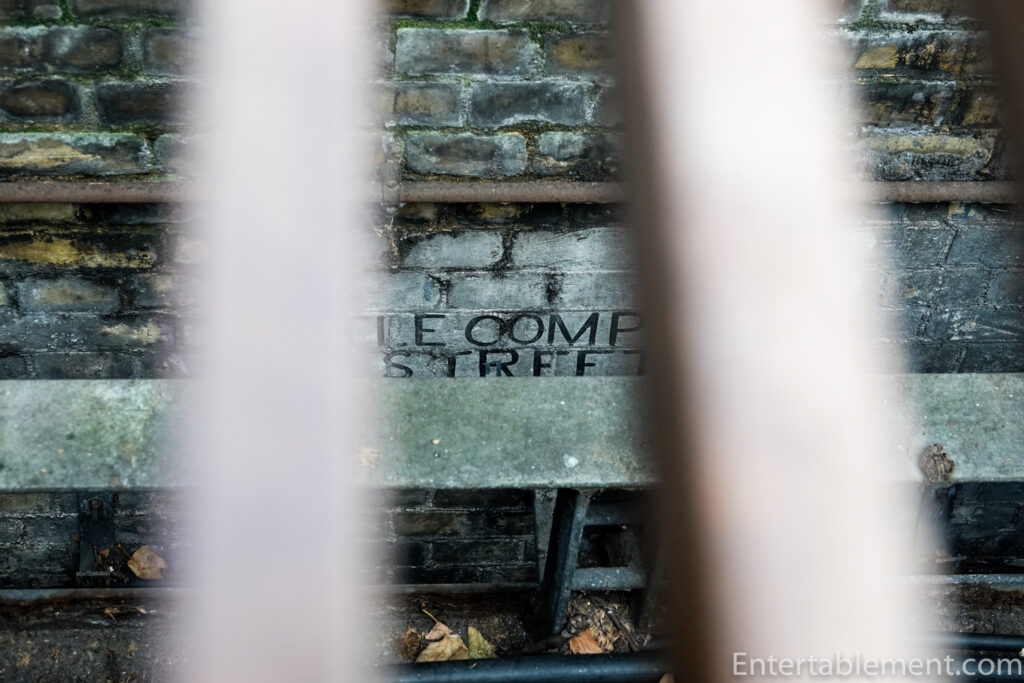



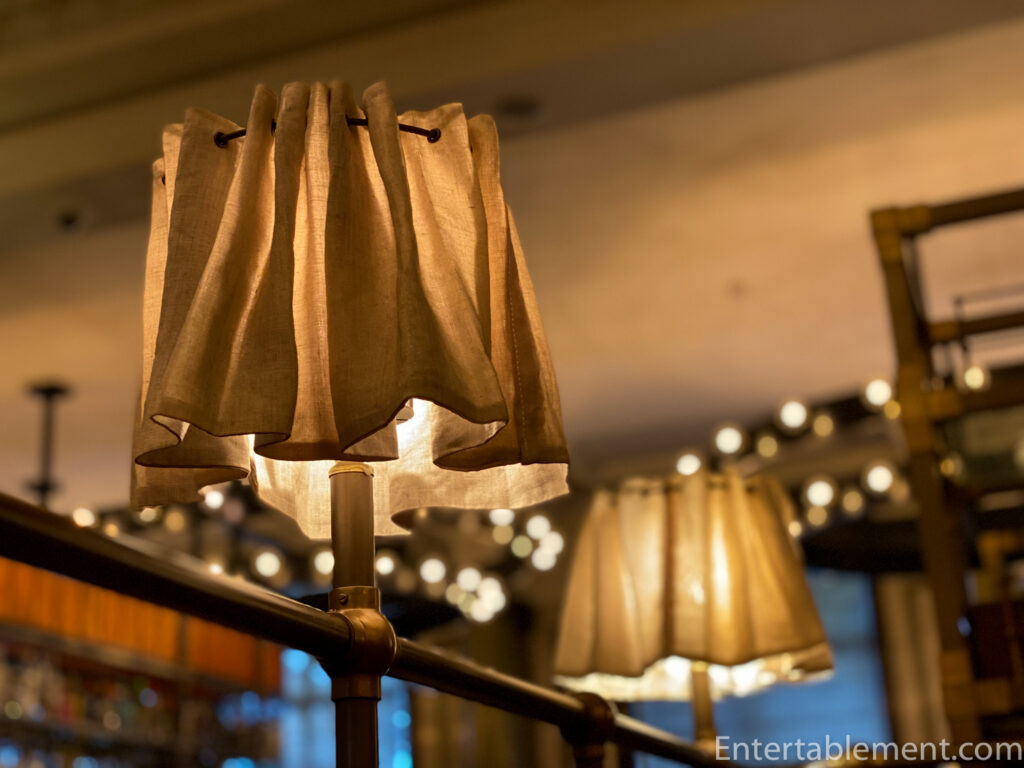
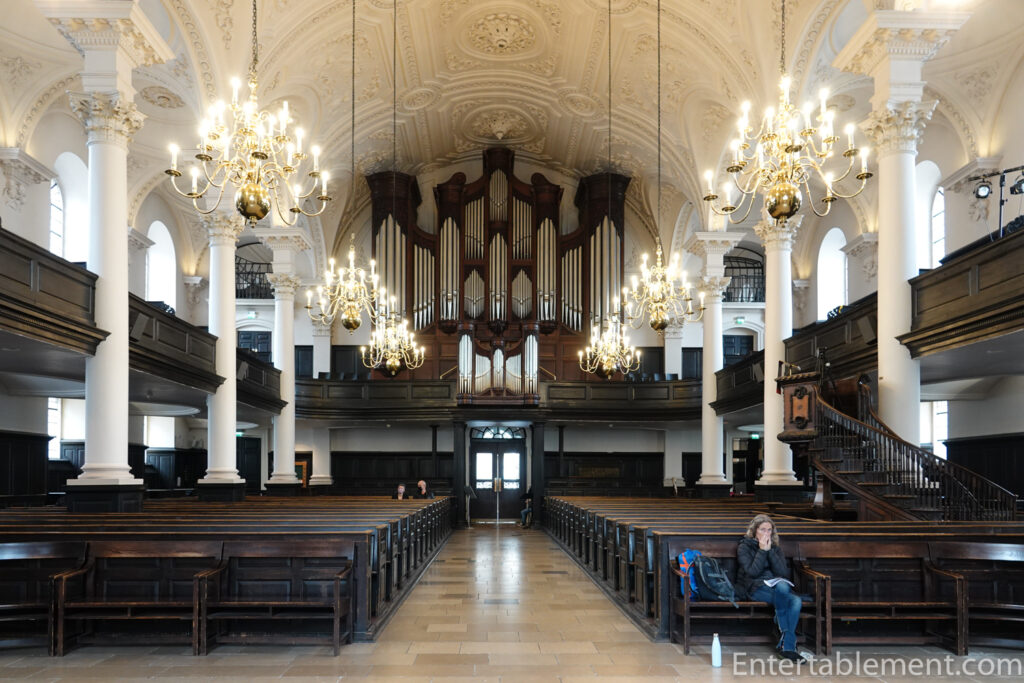
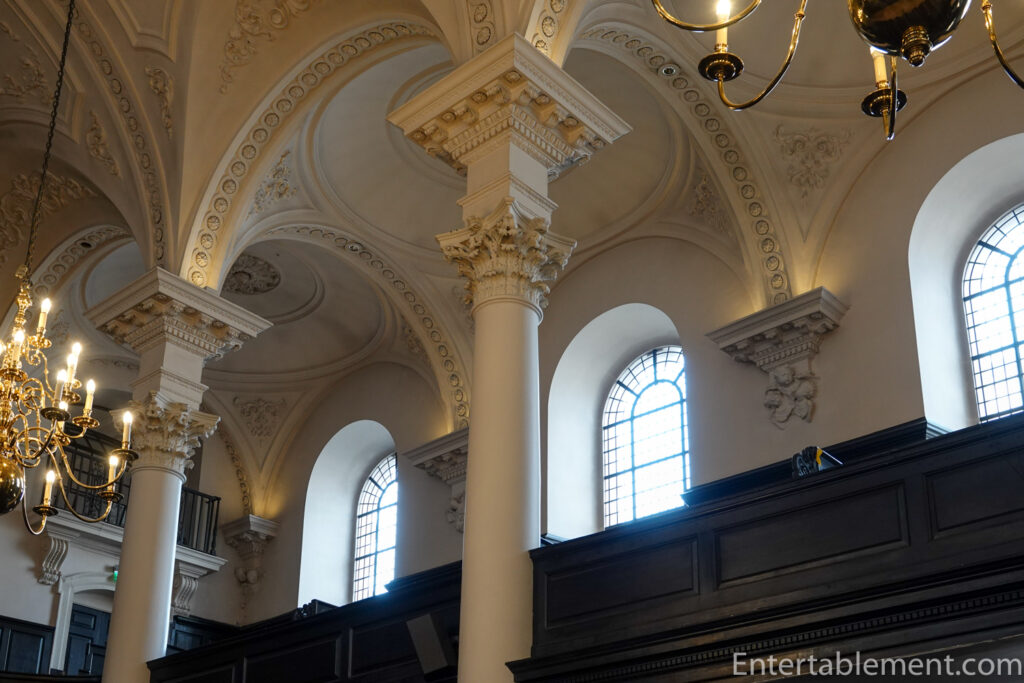
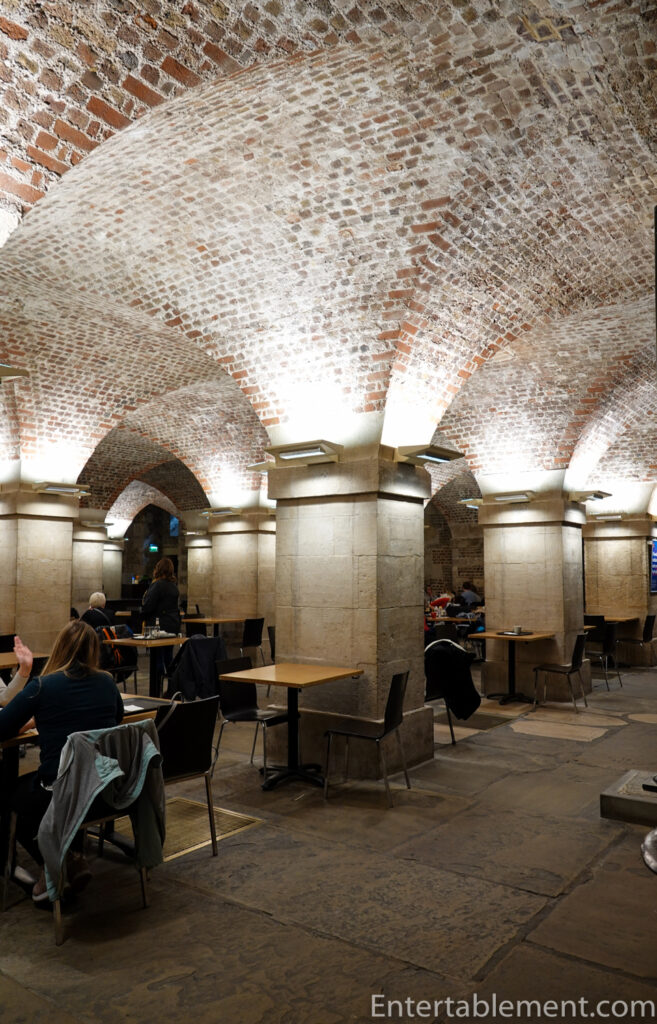
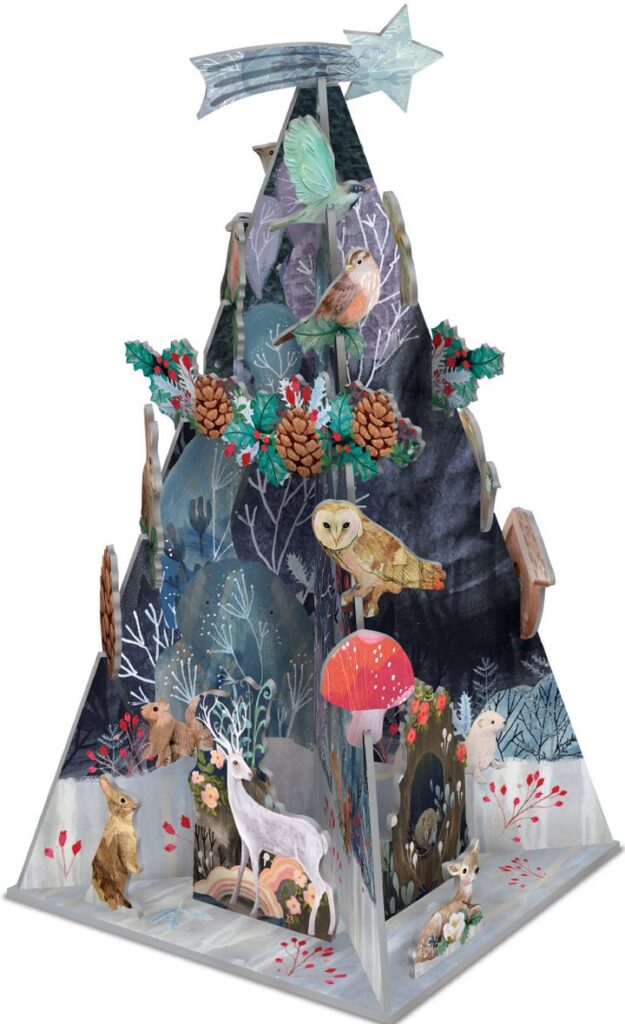
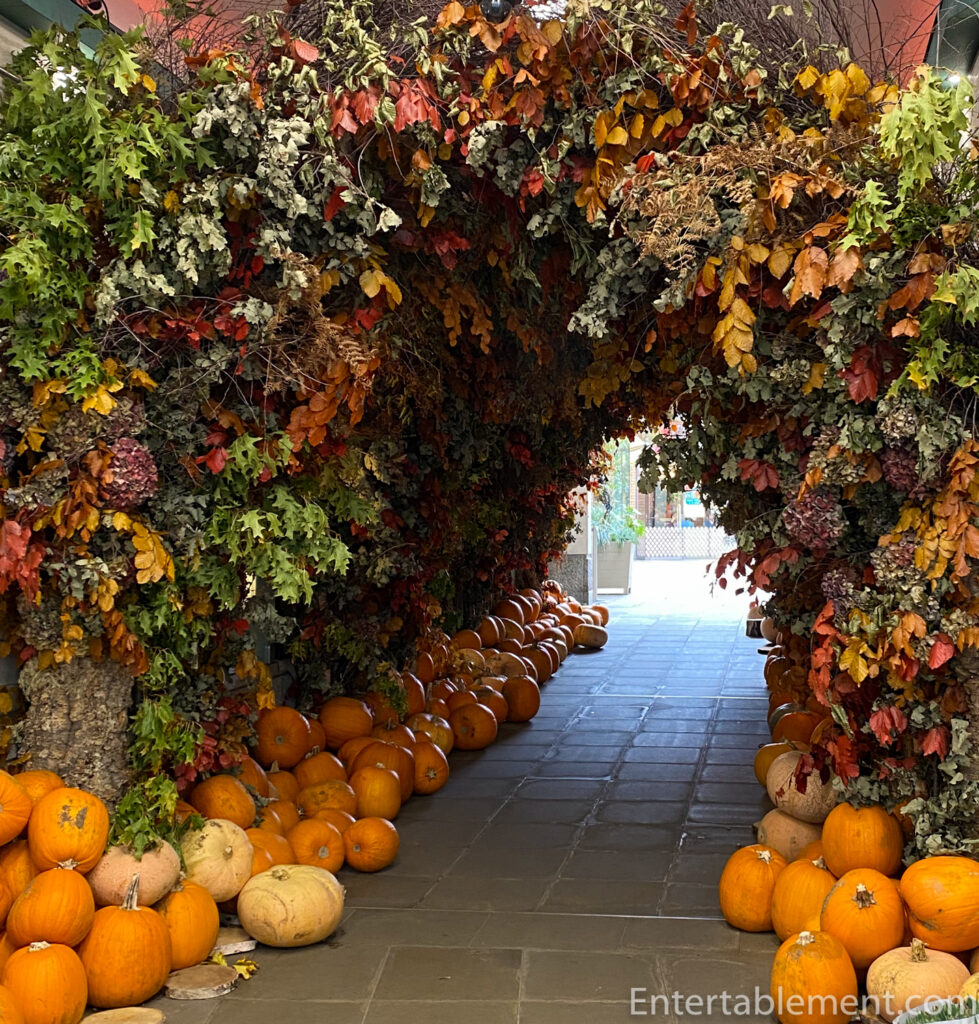



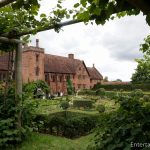


Thank you Helen for sharing your trip to England with your readers. I’m enjoying it immensely and love the photos. Looking forward to reading the next account of your trip.
Cheers!
Rachelle
You’re most welcome, Rachelle. Writing up the blog allows me to enjoy the trip all over again, so it’s a win all round!
Dear Helen,
So glad you had relatively good weather for your trip and that Glenn was finally able to attend the Meeting. Thanks for lovely decor pictures…the prices not so much. Three pound fifty for a piece of cake? Interestingly, the pork prices are reasonable, and the meat is gorgeous.
“Press 1 for Hell.” It’s the same all over. My pension fund gleefully announced in an email that now I could manage it all myself!! The shortage of workers will not be rectified soon in the UK, I fear. We’re finding that old favourite restaurants cannot find top-quality produce at reasonable prices (even in France!), let alone skilled wait-help, many of whom retired during Covid. The silver lining is that less-well-known places are stepping up their game. People are eschewing the fancy and luxurious for the simple and honest, and that’s probably permanent.
Isn’t Atlas Obscura wonderful? Shame that Leighton House is listed as “temporarily closed.”
Cheers,
Beatrice
Hi Beatrice,
It was so nice to finally use those 2020 Member’s Meeting tickets. The whole trip had been moved so often I was losing track of what we had booked and what credits we had.
The short staffing issues were everywhere, and no clear end in sight. All eating establishments/bars were closing early, staff getting shorter tempered by the minute. We’re not quite “Normal” yet.
Lauren introduced me to Atlas Obscura. We really enjoyed being on the lookout for the extra, obscure items en route to more traditional sights. Leighton House is only one of many “temporarily closed”. The National Trust seems to have half their sights closed at present. That’s what happens when you lose a large portion of your volunteers and alienate a big portion your membership. Sigh.
Onward! Things will improve. Humans are very adaptable and it will come right in the end.
Best,
HK
Sounds like you had a wonderful time in spite of a few minor hiccups. After seeing all these photos, it made me really miss our time living in the UK. Can’t wait to hear all about it in person. See you soon.
We did have a lovely time. The hiccups are funny now. But as you know, at the time…
See you guys really soon!
Thank you so much for the virtual travel. We watched Downton Abbey over the weekend, the closest we’ve gotten to London. Mmmm, paella. Hope one day to buy a real paella pan and using traditional outdoor grill method, make a big spread with my son who is quite the cook especially to his wife’s glee. Oh those huge sundaes!! My dear Dad and I each had them in Chicago at the fanciest & most expensive restaurant we ever dined in before or since, when I was 14. He wanted the family to experience that luxury just once. Dad & Mom passed away but boy did they love to travel. Enjoyed this blog very very much. Thank you for sharing!
What a lovely memory you have of your Dad. There is something magical about ice cream, especially sundaes!
Your rental vehicle fees remind me of moving rental trucks here in America. It was cheaper for my friend to drive truck back to State it was rented than have me pay huge fee for one way use to another State. And this was 30+ years ago.
Some things don’t change, apparently!
Beautiful pictures Helen and so glad that you finally got to travel! Not fun all the cancellations and the “hiccups” but luckily memory is somewhat selective, and you will likely remember the good and forget the rest. Looking forward to your next installment. Thank you for sharing!
Hi Kim,
You are so right about selective memory. Apparently we fix on the peak and the end, so I always try to finish up on a good note. The bad stuff now looks funny, so that is also helpful.
Hope all is well in your world.
Best,
Helen
What a wonderful trip! I enjoyed experiencing it all in your writing, and look forward to reading more about it. (And I’m loving that Advent calendar!)
Thanks, Joy! I am a sucker for Advent Calendars. Loooove them. 🙂